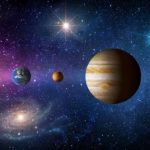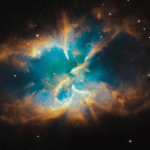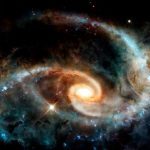 Weird Stuff
Weird Stuff  Weird Stuff
Weird Stuff  Our World
Our World 10 Ways Your Christmas Tree Is More Lit Than You Think
 Movies and TV
Movies and TV The 10 Coolest Stars to Set Sail on The Love Boat
 History
History 10 Things You Didn’t Know About the American National Anthem
 Technology
Technology Top 10 Everyday Tech Buzzwords That Hide a Darker Past
 Humans
Humans 10 Everyday Human Behaviors That Are Actually Survival Instincts
 Animals
Animals 10 Animals That Humiliated and Harmed Historical Leaders
 History
History 10 Most Influential Protests in Modern History
 Creepy
Creepy 10 More Representations of Death from Myth, Legend, and Folktale
 Technology
Technology 10 Scientific Breakthroughs of 2025 That’ll Change Everything
 Weird Stuff
Weird Stuff Ten Bizarre Facts About The Doge Meme
 Our World
Our World 10 Ways Your Christmas Tree Is More Lit Than You Think
 Movies and TV
Movies and TV The 10 Coolest Stars to Set Sail on The Love Boat
Who's Behind Listverse?

Jamie Frater
Head Editor
Jamie founded Listverse due to an insatiable desire to share fascinating, obscure, and bizarre facts. He has been a guest speaker on numerous national radio and television stations and is a five time published author.
More About Us History
History 10 Things You Didn’t Know About the American National Anthem
 Technology
Technology Top 10 Everyday Tech Buzzwords That Hide a Darker Past
 Humans
Humans 10 Everyday Human Behaviors That Are Actually Survival Instincts
 Animals
Animals 10 Animals That Humiliated and Harmed Historical Leaders
 History
History 10 Most Influential Protests in Modern History
 Creepy
Creepy 10 More Representations of Death from Myth, Legend, and Folktale
 Technology
Technology 10 Scientific Breakthroughs of 2025 That’ll Change Everything
10 of the Weirdest Ways the Universe Works
The cosmos is full of mysteries that stump even the smartest thinkers—Einstein himself once fudged his equations to make sense of the universe’s expansion. For every elegant law of physics that we uncover, a dozen baffling questions still lurk in the dark.
But that’s what makes astronomy so exciting. Telescopes are constantly pulling back the curtain, revealing cosmic oddities that challenge how we see reality. From rogue planets raising “children” to galaxies that have been dead for billions of years, the universe continues to surprise us with revelations that are as humbling as they are bizarre.
Some of these discoveries change how we think about life beyond Earth. Others show us how fragile and fleeting our own solar system might be. And a few are just so strange they read like science fiction.
Here are ten of the weirdest ways the universe really works.
Related: Top 10 Bizarre And Deadly Exoplanets
10 Lonely Rogue Planets Might Be Raising Babies
Is there anything sadder than a rogue planet? Imagine Earth and all its hopeful creatures kicked out into space, to likely roam the darkness forever.
There may be trillions of such rogue planets in our galaxy alone, outnumbering the stars.
These latchkey-kid planets have no stars but may not be alone. According to the University of St Andrews, some of these planets have rings of dust around them—kind of like stars do when they’re forming a solar system.
The researchers studied eight rogue planets that were up to ten times the mass of Jupiter and found dusty disks around six of them. And, yes, there are signs that something may be growing within these disks, hopefully not an alien attack ship. At least the rogues and their potential new planets will be alone together.[1]
9 The Galaxy That’s Been Dead for 7 Billion Years
Space looks serene but is incredibly violent—hence our currently dinosaur-free planet.
But some environments may really be serene. Introducing: fossil galaxies, also called relics because they’re quiet and unchanged. These galaxies made almost all their stars within the first three billion years after the Big Bang, then spent the rest of spacetime just chilling. Now, the Italian National Institute for Astrophysics has spotted the most distant massive relic ever.
It’s called KiDS J0842+0059, it’s about three billion light-years away, and as massive as 100 billion Suns. It’s also “perfectly preserved” and has “remained unchanged” for about seven billion years, or half the age of the cosmos.
It’s like a time capsule from the earlier universe, with old stars and no sign of ongoing star birth. A real loner, it has also somehow managed to avoid mergers with other galaxies, keeping its pristine state.[2]
8 The Star That Exploded Twice
Some stars blow up—it’s what they do. This creates some of the most stunning space images. Stellar explosions also made the heavy elements that allow us to exist, so that’s neat.
Recently, scientists revealed the first-ever visual evidence for a “double detonation” supernova, a star so nice it exploded twice. Technically, this “star” was already dead—it was a white dwarf, which orbited another white dwarf.
The first explosion occurred as it stole material from its companion. When it gobbled up too much gas, it reached a critical threshold. The surface material ignited, setting off a detonation shockwave that traveled around the white dwarf and inward, causing another detonation in its core.
These energetic explosions are a primary source of the iron found on Earth, giving us our protective magnetic field and the iron in our blood.[3]
7 Superclusters That Could Crush the Mind
Galaxies are gigantic. Ours is more than 100,000 light-years (95,000 km) in width, and only 1,000 light-years (950 km) thick, making it a cosmic pancake. But when galaxies get together, they can form stupendous clusters that boggle the brain with bigness.
Sometimes, gravity draws many galaxies into near-unimaginable superclusters. To get an idea of their size, picture a coin on a soccer field, representing our Milky Way. The field would represent the cluster.
And if a golf ball were the mass of the Sun, a supercluster would be the mass of Mount Everest. Weight-wise, an average supercluster may be six million billion (a quadrillion) times the mass of the Sun.
Recently, Estonian scientists found the Einasto Supercluster. At the universal speed limit of light (186,000 miles per second/300,000 km/s), it would take 360 million years to go across it. Its mass is 26 million billion Suns. And it’s only three billion light-years away—so a good warp drive could get us there in no time.[4]
6 The Baby Solar System That Looks Like an Insect
Science has discovered lots of baby solar systems, including the littlest one yet, captured at a moment when its gases and dust are just beginning to solidify into planets.
It looks like an insect, according to the historic image taken by the Atacama Large Millimeter/submillimeter Array (ALMA) in Chile, supplemented with data from the James Webb Space Telescope.
The image reveals a baby star called HOPS-315, which is special because it’s the earliest we’ve ever seen the signs of planet formation.
The chaotic picture shows the solidification of future planets from a turbulent environment. This environment is sculpted by a jet of silicon monoxide blasting from the star. There’s also a “butterfly-shaped wind” of carbon monoxide, as well as a disc of molten sand beginning to congeal into a solar system.[5]
5 Alien Oceans May Be Our Best Bet for Life
The recent media hubbub over potential aliens brings up an intriguing point about the search for ET: counterintuitively, the James Webb Space Telescope may find hints of life by not looking at Earth-like planets.
First, because these are hard to detect. Some of the ones we do know are insanely massive, with crushing gravity. Others are so close to their stars that they’re blazing hot.
Therefore, researchers have decided to seek life signs elsewhere. The “optimal strategy” at present may be to look at Hycean worlds, which may be covered by water and have a vaporous atmosphere—think Waterworld, except super foggy.
Scientists would scour these atmospheres for hints of methyl halides, because on Earth these chemicals are created mostly by marine algae, bacteria, fungi, and plants.[6]
4 The Supernova Our Ancestors Saw with the Naked Eye
Imagine seeing the remnants of an ancient explosion that our ancestors saw “live,” 8,000 years ago, in the early days of settled civilization.
Good news—you don’t have to imagine. This is the hauntingly beautiful Cygnus Loop Nebula, only 1,500 light-years (460 parsecs) away.
The image invokes coldness, but that’s just our human color bias. The nebula looks this way because the image is in ultraviolet, taken by NASA’s Galaxy Evolution Explorer.
The tendrils of the nebula are glowing hot dust and gas, energized by the ever-spreading shockwave of the supernova, which occurred between 5,000 and 8,000 years ago and was visible from Earth. The nebula spans an area of sky three times larger than the full Moon.[7]
3 A Hidden Black Hole in Our Galactic Backyard
Science is finding black holes hidden everywhere. After all, they’re usually invisible. Now, astronomers have found the nearest supermassive black hole outside of the Milky Way—and it’s in the Large Magellanic Cloud (LMC), one of our closest galactic neighbors.
The evidence comes from within our own galaxy: a study of 21 hypervelocity stars on the Milky Way’s outskirts provides strong evidence of a supermassive hole “just down the block.”
And that “hypervelocity” term? It means stars are getting pulled away fast enough to escape our galaxy, which has an escape velocity of more than 300 miles per second (540 km/s).
Researchers used the trajectory and speed of the stars to determine that the LMC black hole is 600,000 times the mass of our Sun. Comparatively, the Milky Way’s black hole, Sagittarius A*, is a much heavier four million solar masses.[8]
2 The Zombie Sun That Shredded a Planet
For the first time, astronomers may have confirmed a planet being destroyed by the white dwarf at the heart of a planetary nebula, just 650 light-years (200 parsecs) away.
Why’s that vital? Because our own Sun will become a white dwarf and may similarly smash a planet we know well (spoiler alert: Earth).
Scientists have detected a mysterious X-ray signal for the past 40 years, providing evidence that the white dwarf at the center of the Helix Nebula has shredded a planet that wandered too close.
The planet wasn’t so close initially, but the other planets in the system gravitationally nudged it toward its death.
The debris from this destroyed giant planet falls onto the zombie white dwarf’s surface, exploding into the energetic X-ray flares whose signal has teased astronomers for the past four decades.[9]
1 The Universe Might Be Spinning Like a Carnival Ride
There’s a mystery at the beginning of time. Well, there are many, actually, but the James Webb Space Telescope has just revealed another: too many galaxies in the early universe rotate in the same direction.
In its three-year career, Webb has peered back to Cosmic Dawn and observed some of the universe’s earliest history. Now, it noticed that just after the birth of the universe, around two-thirds of the galaxies spin clockwise.
The most intriguing explanation is hard to comprehend because it encompasses literally everything. Some scientists hypothesize that “the universe was born rotating.” The whole thing, like a cosmic carnival ride.
It kind of makes sense. Just as everything else in the cosmos rotates—including planets and galaxies—the whole of existence may have birthed itself rotating for reasons we may never know, but that are certainly important.[10]








